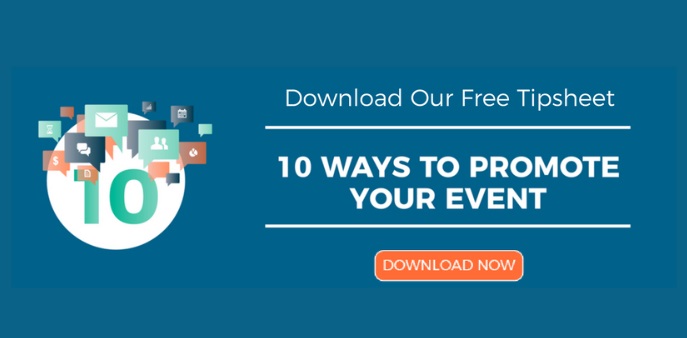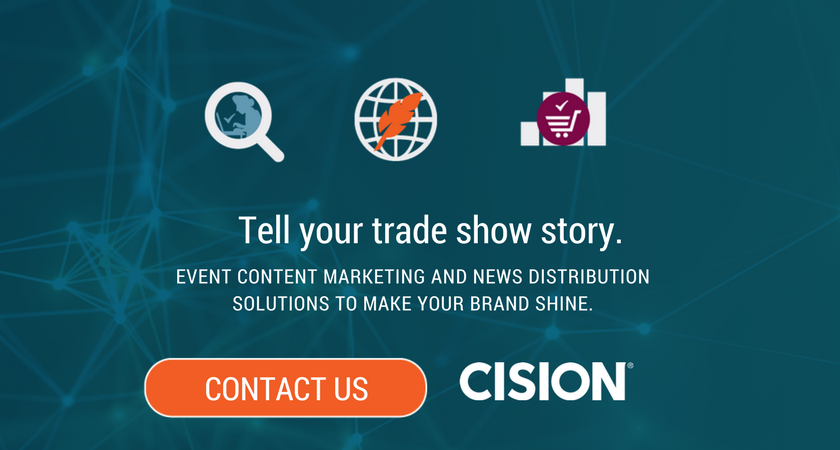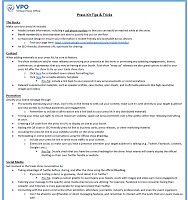
Originally posted on Cision's blog: https://www.cision.com/us/2017/05/5-steps-to-marketing-at-an-event-outside-of-your-industry/
The idea of breaking out of your comfort zone and pushing yourself into the unfamiliar is one that we celebrate. When we strive for something new and different despite the risks, we are often rewarded—with success, an invaluable experience, or a discovery about ourselves.
However, with the risk/reward balance uncertain, many PR and communications professionals are hesitant to try something new. So how do you decide whether to take a risk?
You can stay true to your brand’s personality while simultaneously embracing some outside-of-the-box strategies. Trade shows and events offer the perfect opportunity for companies to experiment. South by Southwest (SXSW), a conference and festival mashup of film, interactive media, and music that takes over Austin every March, lends itself well to creative brand expression.
This year, The North Face embraced the multifaceted nature of SXSW and launched their “Seek No Shelter” campaign alongside the new Apex Flex GTX® waterproof, soft rain jacket at the event. Initially, a rain jacket might seem out of place at the mecca of cool geek culture—unless it’s connected to music, technology, and the spirit of the event.
Through a partnership with local rock band White Denim and streaming service Spotify, The North Face debuted “the world’s first weather-triggered song celebrating rain.” The band premiered the rain-inspired song at SXSW, live and on a stormy stage, giving fans an unforgettable sensory experience. To further enhance and continue the customer experience, the single is available exclusively on Spotify “only where and when it is raining” using geotargeting technology. For more grey sky tunes, SeekNoShelter.com offers a “Rainy Day Playlist” curated by The North Face, as well as a link to buy the new rain jacket.
As much as this campaign feels like a spontaneous adventure, it took a lot of coordination, research, and planning well ahead of time. Even if you’re not creating a marketing campaign on this scale, The North Face illustrates how a brand can leverage other industries to create an authentic event experience.
Here are 5 key tactics to keep in mind when stepping outside of your brand’s event marketing comfort zone:
1. Know Your Audience. Think about who your target audience is—not just in terms of demographics, but what kind of lifestyle they have, what their interests are, and what problems they’re trying to solve. Once you have this information, look for events that attract attendees with similar profiles, then narrow down the list to ones that align with your brand’s vibe.
For example, SXSW is an event that has grown in size and scope since its inception, but has always attracted an enthusiastic group of techies, music fanatics, and content lovers. As people that are interested in cutting-edge everything, it’s no wonder that The North Face selected this passionate attendee group for their innovative campaign.
2. Be Imaginative. It’s difficult to be creative on command, especially when you don’t know where to start. Instead of trying to force a connection between your product and another industry, let one naturally develop. In your brainstorming process, begin by mapping out your product’s user benefits and how they evoke the brand’s personality. How do you want your consumers to feel when using your product or service? What do you want your audience to think of when they hear your company name? If you can identify an emotional thread between your product, the event, and the audience, follow it—that’s the inspiring spark you need.
The North Face celebrates an adventurous life outdoors and all the surprising, tumultuous weather conditions that come with it. Therefore, bringing weather onstage and using real-time storms to dictate digital music does not seem strange at all, but rather right within their wheelhouse.
3. Forge Partnerships. You know what your business excels at doing; whether resources are plentiful or scarce, the company is laser-focused on its strategy. However, no matter how successful the company is at tackling new endeavors, when it comes to experimenting outside of your industry, it’s wise to tap established brands in those spaces for their expertise. Not only will you strengthen your credibility by partnering with industry icons, but you will gain access to that brand’s users, thereby broadening your audience (and reciprocating the favor!).
If you’re unsure of who to put on your partner shortlist, simply look at past event exhibitors, participants, speakers, and sponsors. For example, both Spotify and White Denim had previous appearances at SXSW, making them extra-appealing candidates.
4. Make Memorable Experiences. What kinds of moments stick out most in your memory? Aside from major life milestones, often the clearest, best stories we tell—no matter how long ago they occurred—are the ones where something unexpected happened. At trade shows and events, where everyone is vying for attendee attention, it can be tricky to create a unique experience that’s not overly gimmicky. Don’t be afraid to start with safe staples like photo booths, celebrity appearances, hands-on demos, and even virtual reality. From there, add a twist by leveraging your partnerships and your brand’s point of view.
Something like a concert is pretty memorable on its own, but adding special weather elements to a performance makes it even easier to recall—and tempting to share across social media.
5. Create Focused Content. Events are a great springboard for launching new products, sharing big announcements, and celebrating milestones. But what happens afterward? What about the industry insiders who can’t make it to the show, or the end consumer who can’t experience the brilliant spectacle you’ve carefully orchestrated? This is where a multichannel content strategy comes into play.
Instead of letting other people tell your story on social media, shape your narrative by guiding audiences along the path you want them to take. A dedicated microsite or landing page filled with photos, videos, and a call-to-action that you can promote across communication channels is a smart way to give your campaign greater reach and longevity.
Event marketing is challenging, but the rewards of a successful campaign can reverberate for months—even years—after the initial launch. Try venturing outside of your typical campaign strategy next time, and enjoy the adventures that await!
For more event marketing tips, visit the Virtual Press Office Knowledge Center here.



